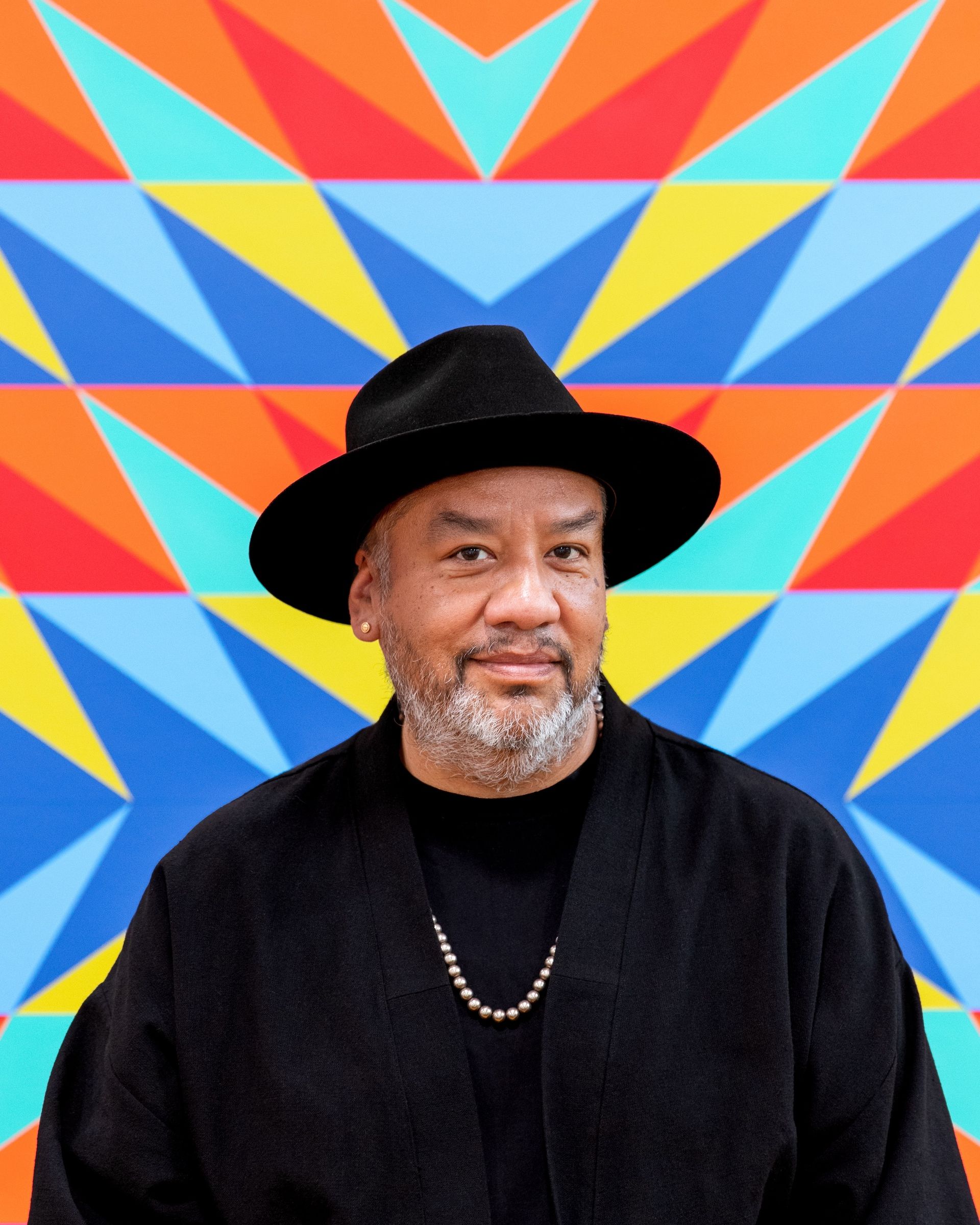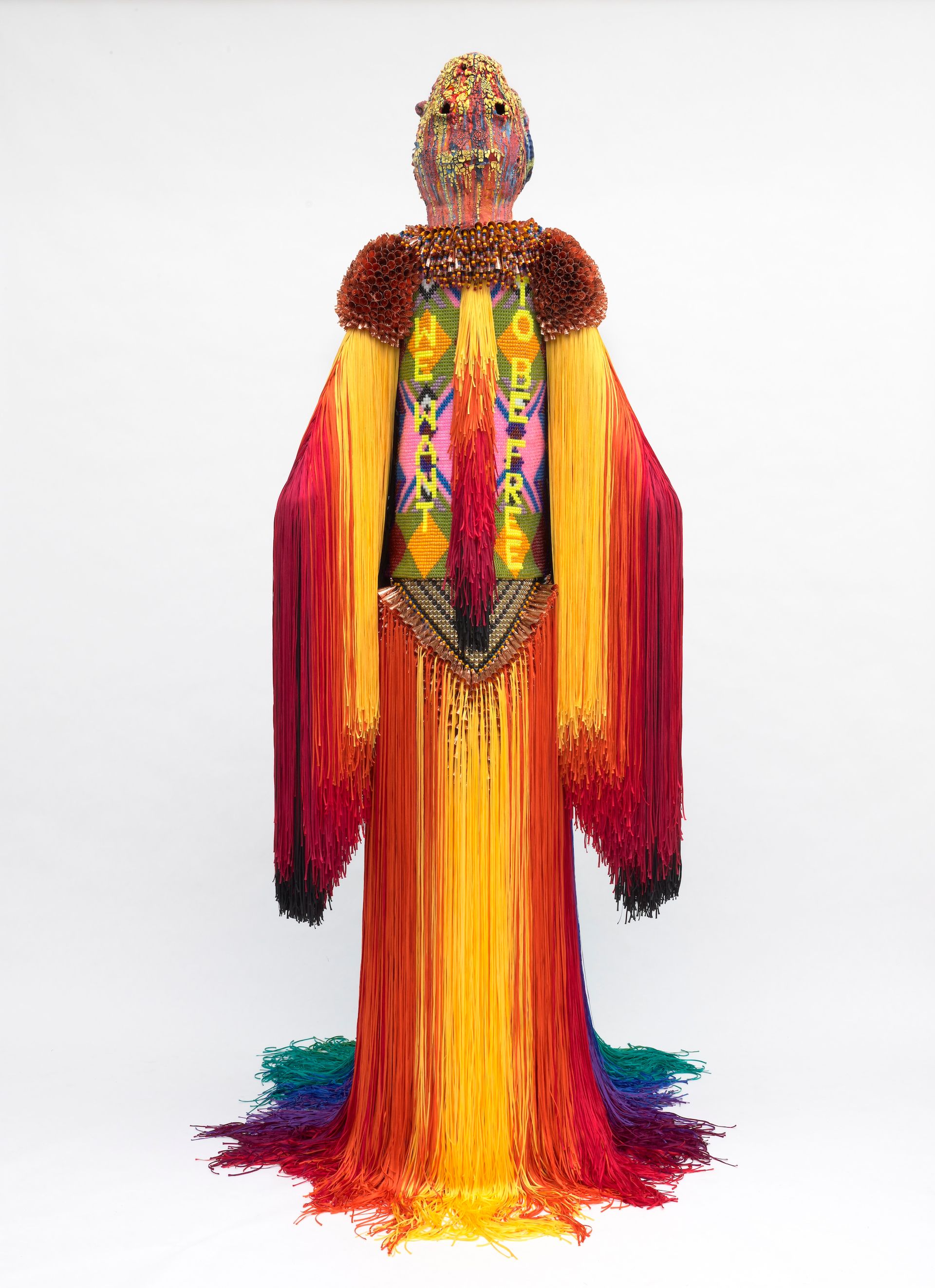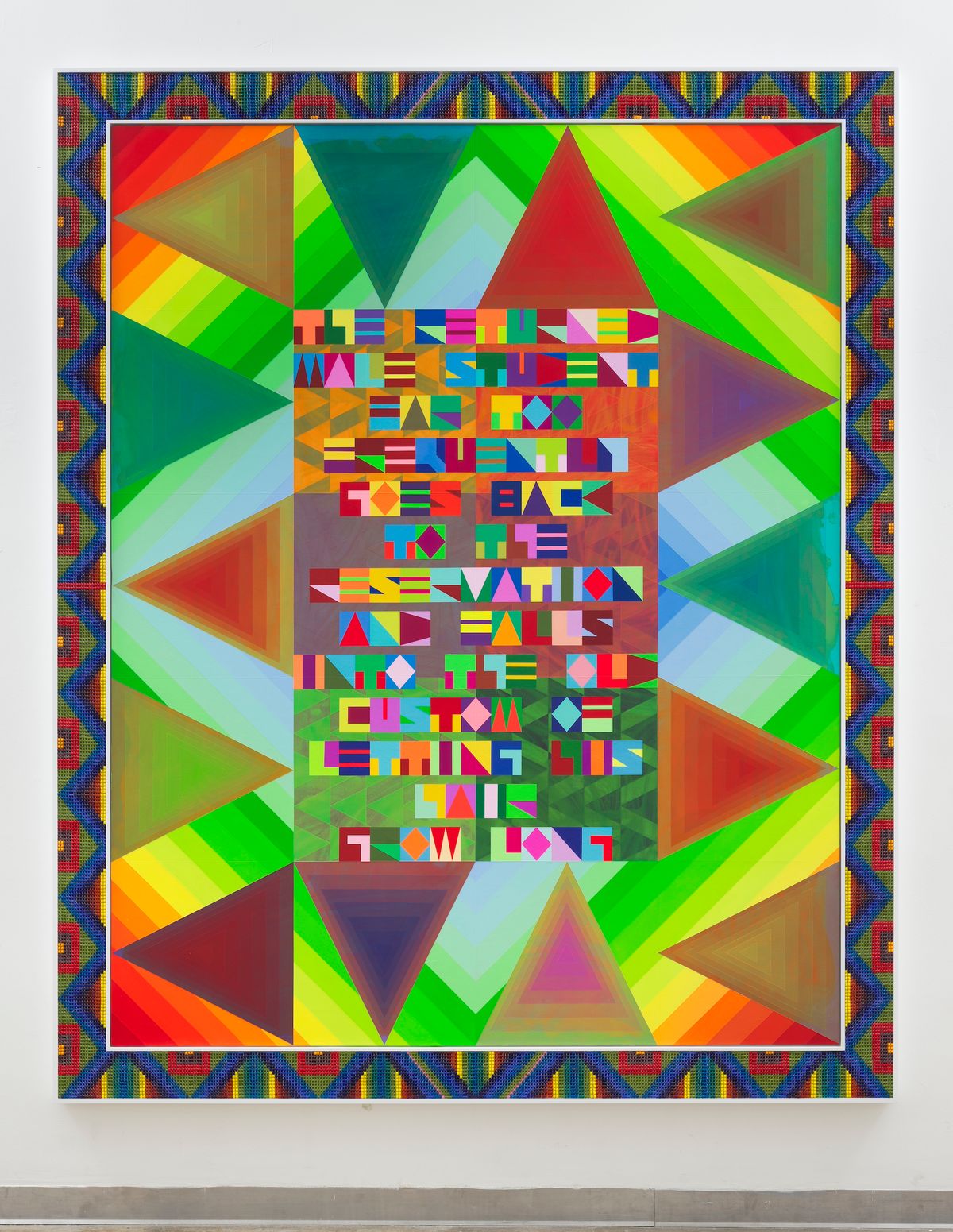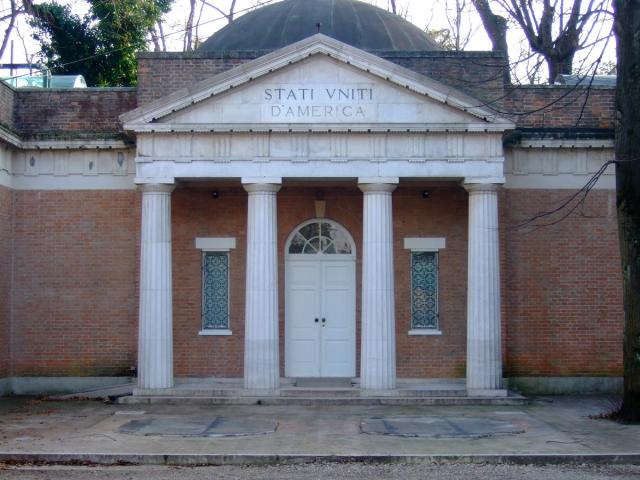Jeffrey Gibson’s exuberant contribution to the 2024 Venice Biennale, which closed last November, is now on its way to Downtown Los Angeles. The Broad will be exhibiting the space in which to place me, Gibson's vividly coloured and kaleidoscopically patterned exhibition for the US Pavilion, from 10 May to 28 September.
A member of the Mississippi Band of Choctaw Indians who also has Cherokee ancestry, Gibson was the first solo Indigenous artist to represent the US at the Biennale. His exhibition—“a technicolour anthem of inclusivity”, as the Cantor Arts Center’s director Veronica Roberts memorably put it—celebrates the survival of marginalised folks in the face of injustice or violence, with historical quotes embedded in dazzling artworks and used as their titles. Now he is bringing that sense of visual abundance to a broader US audience, including more Native Americans, he hopes.
Does Gibson think the exhibition will read differently at this time in US history, when LGBTQ and immigrant rights are under attack from Donald Trump’s administration? “What’s most disturbing right now is the erasure of these histories—civil rights histories, histories of antisemitism, Black American histories, slavery, Native American histories, queer histories,” he says.

Jeffrey Gibson Photo by Brian Barlow, courtesy of Jeffrey Gibson Studio
“I don’t really consider myself an activist in the sense of addressing immediate politics,” he adds. “What I wanted to do was to show that we aren’t the first individuals fighting for these rights or freedoms or recognitions. This is something at the core of the American narrative.”
Commissioned by Louis Grachos of Site Santa Fe and the Portland Art Museum alongside curators Abigail Winograd and Kathleen Ash-Milby, the pavilion installation was not designed to travel. “It wasn’t in our original vision,” says Gibson. But when the Broad’s director Joanne Heyler approached him about the possibility, he realised it could be a way for “more people here in the United States and some part of a Native American population to be able to see it in person”, he says, describing efforts last year to bring Indigenous performers and scholars to Venice as well.
The Broad show will feature almost all of the Venice components, with the most notable omission being the red stage—a cluster of columns and pedestals—that was installed outside the US Pavilion’s Palladian-style building. “There just wasn’t room for it,” Gibson says. He will be exhibiting the rainbow-adjacent flags that hung outside the pavilion, this time inside the museum, as well as ten paintings, seven sculptures, three murals and a video installation.

Jeffrey Gibson, WE WANT TO BE FREE, 2024 Courtesy of Jeffrey Gibson Studio. Photo by: Max Yawney
One of the largest paintings in the show, THE RETURNED MALE STUDENT FAR TOO FREQUENTLY GOES BACK TO THE RESERVATION AND FALLS INTO THE OLD CUSTOM OF LETTING HIS HAIR GROW LONG (2024), was just acquired by the Broad. The painting spells out this quote, which comes from an openly racist 1902 letter written by the Commissioner of Indian Affairs to a California school superintendent, in Gibson’s trademark lettering, which resembles colourful pattern-block puzzle pieces. The letters can be hard to decipher but the mood is decidedly ebullient.
His towering jingle-adorned, nylon-fringed dance-party of a sculpture, WE WANT TO BE FREE, directly references the Civil Rights Act of 1866 and evokes any number of human rights violations in the US today. Gibson sounds confident, though, that the Broad will not tone down any of the exhibition content or programming because of the current US government overreach.
“As a privately funded institution, they’re not attached to federal funding. It means they are still in charge of what they programme,” he says. “They’re really embracing the content of the exhibition, presenting it in its fullest iteration here in Los Angeles.”
The show will not, Gibson says, travel elsewhere.



